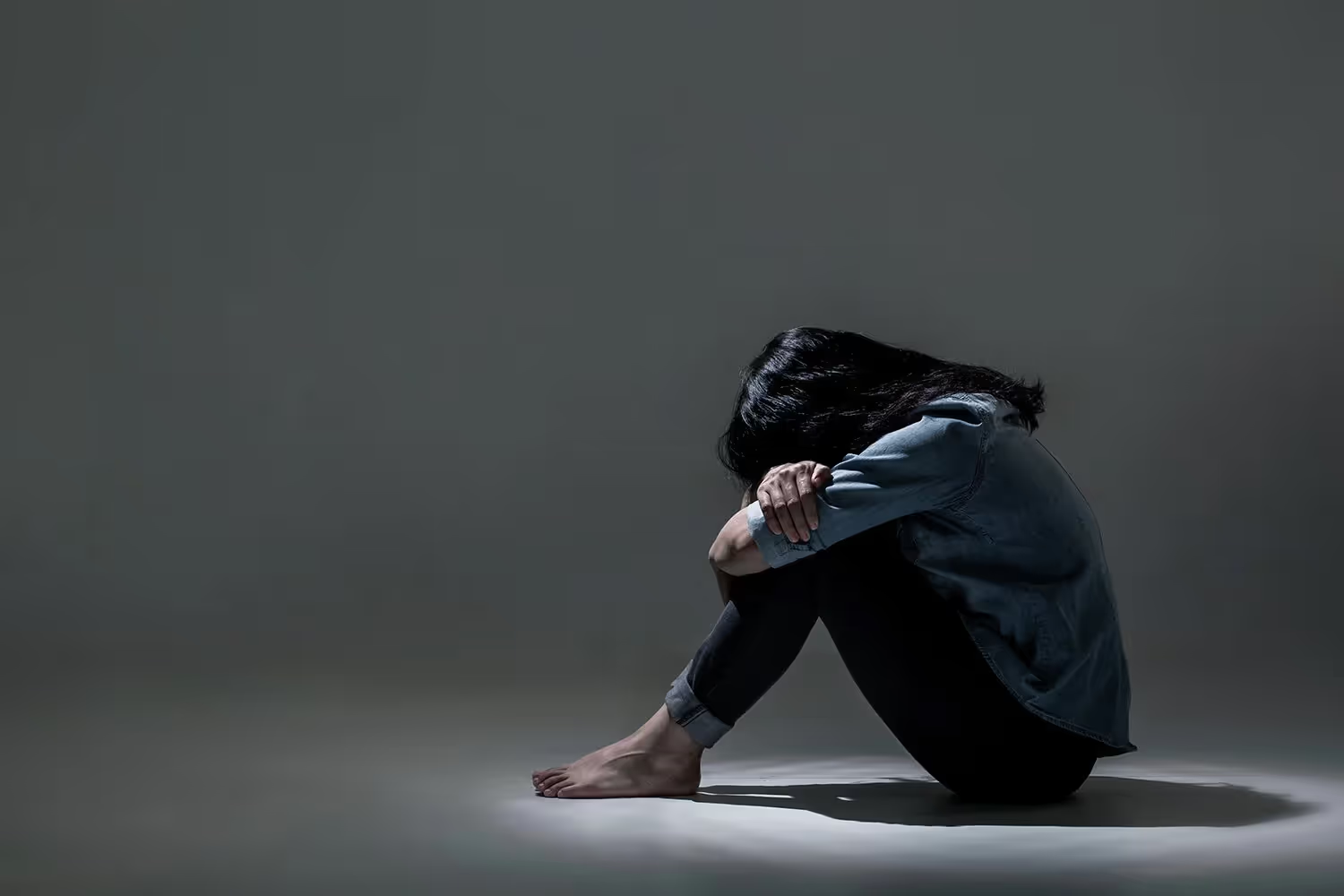46 Jarring Statistics About College Students and Mental Health
Concerns surrounding mental health continue to increase across the board. However, out of every other demographic, these issues are especially prevalent in college students.

Concerns surrounding mental health continue to increase across the board. However, out of every other demographic, these issues are especially prevalent in college students.
Between balancing school, work, and having a social life, it’s easy for students to get overwhelmed and anxious. However, oftentimes they can’t access or afford the consoling services they need. Without getting help, the issues persist and can spiral into worse effects.
Let’s take a more specific look into how mental health affects college students.
- One in four college students has a diagnosable mental health condition. (1)
- One in three college freshmen struggles with mental illness. (2)
- Only about half of first-year students rated their mental health as “above average” or in the “highest 10%.” (3)
- Around 33% were already taking psychotropic medications by the time they got to college. (4)
- 75% of mental health conditions begin by age 24. (5)
- 39% of students experience a significant mental health issue. (6)
- About three-quarters of those with a mental health condition experience a health crisis on campus. More than 34% of them say that their college didn’t know about the experience. (7)
- 53.4% of college students say that they’ve felt things were hopeless. (8)
- 80% feel overwhelmed by their responsibilities. (9)
The Biggest Concern
Anxiety is the most predominant mental health concern for college students. Because of their many responsibilities, they’re plagued with anxiety which can spiral into other problems.
- Anxiety continues to increase, affecting 50.6% of students. Anxiety spirals into depression (41.2%), relationship concerns (34.4%), suicide ideation (20.5%), self-injury (14.2%), and alcohol abuse (9.5%). (10)
- More than 60% of college students report experiencing “overwhelming anxiety” in a year. (11)
- 75% of those with anxiety disorders experience their first episode by age 22. (12)
Mental Health Affects Academic Performance
Academics cause stress and anxiety for students which doesn’t help with mental health illnesses. Not only that, but these conditions reduce focus. Those with mental health conditions struggle more with functioning at school. This leads to difficulty with schoolwork, thus worsening their academic performance.
- About half of students feel stressed due to academic-related issues. Almost 21.1% worry due to failure, and 13.6% face parental or peer pressure when it comes to academics. (13)
- College students identified issues that affect their academic performance. These are as follows (14):
- Stress - 30%
- Anxiety - 22%
- Difficulty sleeping - 20%
- Depression - 14%
- In 2018, 41.9% of students felt so depressed in the past year that it was difficult to function compared to just 30.7% in 2009. (15)
Withdrawing from Campus
The effects of mental health on academics can cause young people to drop out of college altogether. If they feel too overwhelmed, they’ll likely become unmotivated, struggle to succeed, or experience increased issues. Those who never received treatment for their help are even more likely to drop out.
- 64% of those who withdrew from college did so because of a mental health-related reason. (16)
- 86% with a psychiatric disorder leave college before completing their degree. (17)
- 45% of those who stopped attending for a mental health reason didn’t request accommodations while at school. (18)
Coping with Illness
Those who are suffering handle their conditions in ways other than just leaving college. A lot of these are through unhealthy coping mechanisms. Mental health illness leads to negative effects such as drug and alcohol abuse, eating disorders, self-harm, and suicide. They experience these issues at high rates, some even more than other groups.
- College students are at a higher risk than the general population for self-injury. The rate of self-injury among this demographic ranges from 17% to 35%. (19)
- 20% of college students said they have or had an eating disorder. 15% of women between 17 and 24 suffered an eating disorder. (20)
- Eating disorders are in the top four leading causes of burden of disease in terms of years of life lost through death or disability for women 15- to 24-years-olds. (21)
- Around 20% of college students meet the criteria for an alcohol use disorder. (22)
Suicide on Campus
When an illness goes untreated, it progressively gets worse. This often leads to the negative coping mechanisms mentioned previously. But in some cases, it causes even worse problems.
Suicide is an increasing issue in America for all ages. But the statistics coming from university campuses are shocking.
- Suicide is the second leading cause of death among 15 to 24 year olds. (23)
- More than 1,000 suicides occur on college campuses per year. (24)
- The prevalence rate for serious suicide ideation increased from 23.8% in 2010 to 32.9% in 2015. (25)
- The number of college students who seriously considered suicide in the past year doubled from 6% to 12% between 2009 and 2018. (26)
- One in every 12 students makes a suicide plan. (27)
- 20% had considered suicide at some point during their time enrolled at a university. (28)
- 9% said they had attempted suicide. (29)
- From 2007 and 2017, drug-related deaths increased by 108%. Alcohol-related deaths increased by 69% and suicide increased by 35% for those aged 18 to 34 years. (30)
- 67% of suicidal students tell a friend before telling anyone else. (31)
- 86% of college students who died by suicide did not seek counseling center treatment. (32)
Receiving Treatment for Conditions
Despite these common issues, many college attendees don’t receive the necessary treatment. While the number of those receiving treatment has increased on campuses, enrollment hasn’t increased at the same rate. This suggests that more young people need services because the issues continue to grow.
They may not receive help for a variety of reasons such as stigma, not knowing where to get treatment, or from a lack of resources on campus. Without proper help, mental health continues to be an issue and contributes to a rise in other problems.
- Two-thirds of those with a mental health disorder don’t seek treatment. (33)
- 50% of students believe that people think less of someone who receives treatment for mental health. (34)
- From 2007 to 2017, the rate of college students who receive mental health treatment increased from 19% to 34%. The rate of diagnosis increased from 22% to 36%. (35)
- From 2009 to 2015, the average number of students using college counseling centers jumped by almost 30%. Although, the academic enrollment increased by less than 5%. (36)
- From 2014 to 2019, this number jumped by 35% and enrollment still only increased by 5%. (37)
Lack of Resources
I’ve already mentioned that stigma is a reason that those struggling don’t get help. It’s shocking enough that half of these students may avoid help due to others’ opinions, but it’s not the only reason.
Other barriers are that they don’t know what options are available to them, or their university lacks sufficient resources.
- 64% of those enrolled in college responded “no” or “did not know” when asked if their campus websites included mental health resource information. (38)
- The recommended number of students per professional mental health staff member on campus is 1000-1500. (39)
- But the average number of students per counselor on college campuses is 1737. (40)
- 58% of four-year colleges and 8% of two-year colleges offer psychiatric services. (41)
- Wait-times for counseling appointments were over three weeks at more than 160 colleges. (42)
Professionals Recognize the Growing Issue
As university professionals see this problem increase, they’re recognizing the need for more resources. They’re identifying what services they lack so that they can put more funding toward resources that will ease the burden on young people.
- 28% of student affairs administrators said that mental health concerns among students far outweighed other pressing campus issues. (43)
- 94% of counseling center directors noticed increasing trends in how many college attendees have severe psychological problems. (44)
- 47% of practitioners say that funding limitations are a major hindrance to success for those with mental health conditions. 33% said that services currently provided were inadequate. (45)
- 72% of university presidents said that they’re allocating more funds to address student mental health. (46)
Conclusion
More and more college students continue to suffer from mental health problems. This hinders their ability to perform well in school which contributes to the dropout rate and boosts in other issues. These young individuals turn to negative coping habits and may eventually experience suicide ideation.
Without appropriate help, these concerns continue to grow. Higher education needs more resources for these young people and must make the resources easily accessible and known. As professionals recognize the negative effects and uphill trend of mental health conditions, they can pinpoint ways to improve services and experience for students.
Resources
- Wiley Online Library
- Higher Ed Connects
- Psychiatric Times
- UCOP
- NAMI
- Active Minds
- Affordable Colleges Online
- Imagine America Foundation
- College Stats
- AUCCCD
- The New York Times
- Best Colleges
- Drug Investigation Today
- Suicide Prevention Resource Center
- ACHA 2009 and ACHA 2018
- Academic HealthPlans
- American Psychological Association
- The Beacon
- Journal of the American Board of Family Medicine
- Affordable Colleges Online
- Academy for Eating Disorders
- National Institute on Alcohol Abuse and Alcoholism
- SAVE
- Huffington Post
- Center for Collegiate Mental Health
- Health
- USA Today
- Kognito
- Harvard Medical School
- TIME
- The Jed Foundation
- American College Counseling Association
- World Health Organization
- American Council on Education
- Psychiatry Online
- Center for Collegiate Mental Health
- Associated Press
- Nation Council on Disability
- International Association of Counseling Services, Inc.
- U Are Heard
- The Atlantic
- University Business
- Inside Higher Ed
- NASPA
- National Council on Disability
- Higher Education Today
Emphasize your product's unique features or benefits to differentiate it from competitors
In nec dictum adipiscing pharetra enim etiam scelerisque dolor purus ipsum egestas cursus vulputate arcu egestas ut eu sed mollis consectetur mattis pharetra curabitur et maecenas in mattis fames consectetur ipsum quis risus mauris aliquam ornare nisl purus at ipsum nulla accumsan consectetur vestibulum suspendisse aliquam condimentum scelerisque lacinia pellentesque vestibulum condimentum turpis ligula pharetra dictum sapien facilisis sapien at sagittis et cursus congue.
- Pharetra curabitur et maecenas in mattis fames consectetur ipsum quis risus.
- Justo urna nisi auctor consequat consectetur dolor lectus blandit.
- Eget egestas volutpat lacinia vestibulum vitae mattis hendrerit.
- Ornare elit odio tellus orci bibendum dictum id sem congue enim amet diam.
Incorporate statistics or specific numbers to highlight the effectiveness or popularity of your offering
Convallis pellentesque ullamcorper sapien sed tristique fermentum proin amet quam tincidunt feugiat vitae neque quisque odio ut pellentesque ac mauris eget lectus. Pretium arcu turpis lacus sapien sit at eu sapien duis magna nunc nibh nam non ut nibh ultrices ultrices elementum egestas enim nisl sed cursus pellentesque sit dignissim enim euismod sit et convallis sed pelis viverra quam at nisl sit pharetra enim nisl nec vestibulum posuere in volutpat sed blandit neque risus.

Use time-sensitive language to encourage immediate action, such as "Limited Time Offer
Feugiat vitae neque quisque odio ut pellentesque ac mauris eget lectus. Pretium arcu turpis lacus sapien sit at eu sapien duis magna nunc nibh nam non ut nibh ultrices ultrices elementum egestas enim nisl sed cursus pellentesque sit dignissim enim euismod sit et convallis sed pelis viverra quam at nisl sit pharetra enim nisl nec vestibulum posuere in volutpat sed blandit neque risus.
- Pharetra curabitur et maecenas in mattis fames consectetur ipsum quis risus.
- Justo urna nisi auctor consequat consectetur dolor lectus blandit.
- Eget egestas volutpat lacinia vestibulum vitae mattis hendrerit.
- Ornare elit odio tellus orci bibendum dictum id sem congue enim amet diam.
Address customer pain points directly by showing how your product solves their problems
Feugiat vitae neque quisque odio ut pellentesque ac mauris eget lectus. Pretium arcu turpis lacus sapien sit at eu sapien duis magna nunc nibh nam non ut nibh ultrices ultrices elementum egestas enim nisl sed cursus pellentesque sit dignissim enim euismod sit et convallis sed pelis viverra quam at nisl sit pharetra enim nisl nec vestibulum posuere in volutpat sed blandit neque risus.
Vel etiam vel amet aenean eget in habitasse nunc duis tellus sem turpis risus aliquam ac volutpat tellus eu faucibus ullamcorper.
Tailor titles to your ideal customer segment using phrases like "Designed for Busy Professionals
Sed pretium id nibh id sit felis vitae volutpat volutpat adipiscing at sodales neque lectus mi phasellus commodo at elit suspendisse ornare faucibus lectus purus viverra in nec aliquet commodo et sed sed nisi tempor mi pellentesque arcu viverra pretium duis enim vulputate dignissim etiam ultrices vitae neque urna proin nibh diam turpis augue lacus.


.avif)

